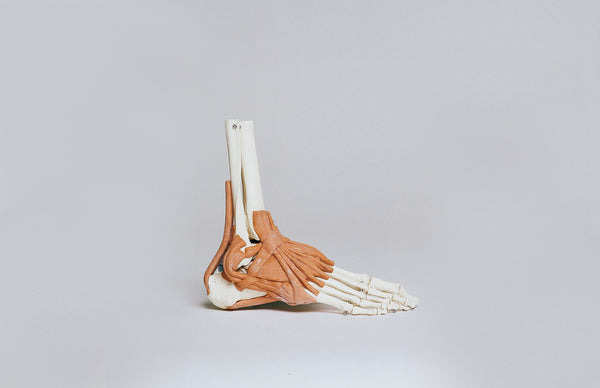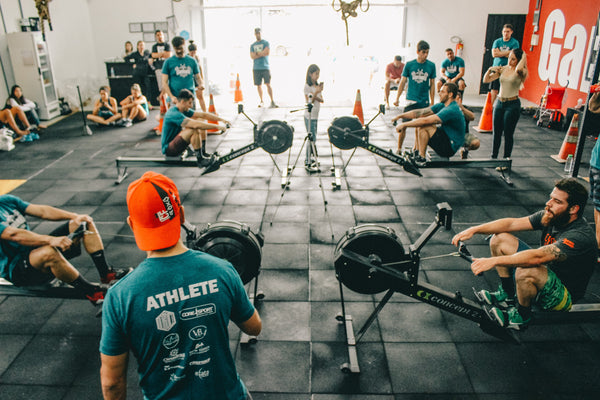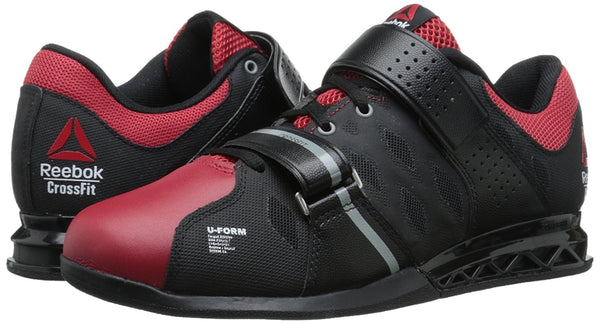- Continue Shopping
- Your Cart is Empty
How CrossFitters Can Avoid or Treat the Pain of Plantar Fasciitis

Anyone who participates in a high-impact workout program like CrossFit understands its risks and rewards. The rewards are both physical and mental – a leaner, stronger body, better cardio health, stronger bones that result from resistance and weight training and greater self-esteem that occurs when difficult challenges are met. On the downside, the risks include injuries to areas of the body that are vulnerable to repetitive stress from all that jumping, running and lifting found in the WODs.
One of the most common repetitive stress injuries for CrossFitters is plantar fasciitis. In nutshell, this an inflammation and degeneration of a thick band of tissue that connects the heel bone to the toes. It is extremely common among those who spends a lot of time on their feet – about 3 million people each year in the U.S. develop plantar fasciitis - but the percentage of athletes with this condition is much higher than non-athletes.
An Ankle and Foot Surgeon Unpacks Plantar Fasciitis
Dr. Christopher Sakowski is an orthopedic surgeon in the Dallas-Fort Worth area who specializes on treating conditions of the ankle and foot. He is also on the referral line of Texas Health Spine & Orthopedic Center. Dr. Sakowski outlines the most common causes of plantar fasciitis.
"It is thought to arise from a biomechanical issue," he said. "Repetitive microtrauma in the region of the plantar fascia (heel of the foot) causes a degeneration of the fibers at the attachment to the calcaneus – the connecting tissues between the heel and toes.
“The term 'fasciitis' is somewhat a misnomer, as it implies inflammation. This condition really this is more of a degenerative condition. Certain mechanical factors such as a flatfoot deformity (or pronation of the foot), which is associated with tight calf muscles, is thought to be a risk factor. Other contributors to the condition include a recent increase in activity, training (or prolonged standing) on a hard surface such as cement or poorly cushioned shoes."

Orthopedic specialists and CrossFit trainers also know that there are often compensatory injuries, since CrossFit fanatics have a tendency to push through their injuries. For example, knee pain that occurs due to a change in gait from a foot injury or pain in the other foot after a chronic injury on the opposite side.
Preventing Plantars: Stretching, Shoes and Orthotics
What can a serious runner or CrossFitter do to avoid getting this injury?
"A good calf stretching program is always recommended prior to any training regimen to help avoid injury," Dr. Sakowski said. "This will also help prevent developing plantar fasciitis. Also, check your shoes regularly to ensure they are well-padded and supportive. Depending on frequency of use, running shoes may need to be replaced as often as every 6 months."
Dedicated CrossFitters understand the importance and the challenge of choosing the correct shoes for a program that has such a wide range of activities – running, weight training, jumping – in a typical WOD.
"I often see my CrossFit patients wearing shoes that are either inappropriate for the activity or shoes that are broken down," noted Dr. Larry Huppin, a Seattle podiatrist.
"Despite the fact that there are many shoes marketed as 'CrossFit Shoes,' there is no one perfect shoe for CrossFit as the activities are just too varied. In fact, theoretically, you should have three types of shoes for CrossFit:
- One pair of shoes for lifting
- One pair for jumping
- One pair for cardiovascular fitness (running)

"However, it is not practical to expect participants to change shoes each time they move from, say, a box jump to a clean and jerk. Thus, it is important to find a shoe that offers the best protection possible for all of these activities.
"Of all of the activities done during CrossFit, weight-lifting is the most technically difficult and the activity that requires the best form in order to prevent injury. So, it is my recommendation that CrossFit athletes focus on getting a very good pair of weight-lifting shoes that also will offer some protection for jumping and cardiovascular activities."
Dr. Huppin, who is himself a CrossFit athlete, recommends several training shoes, and you can get a look and overview of these by clicking here.
Another factor that can help prevent plantar fasciitis in an orthotic shoe insert. Dr. Huppin explains.
"The purpose of any orthotic is to reduce stress on tissue that is prone to injury or is already injured," he said. "For example:
- If a patient is having trouble with plantar fasciitis the goal of an orthotic is to reduce tension on the plantar fascia by limiting arch collapse.
- If a patient is prone to metatarsal stress fractures, the orthotic is prescribed to reduce force through those specific metatarsal bones.
- If a patient is prone to 'runner's knee' or 'jumper's knee' due to excessive foot pronation, the orthotic should function to limit that pronation and help keep the knee in proper alignment."
Treatment for This Condition
"Surgery is very rarely performed for this condition," Dr. Sakowski said. "Initial treatment always focuses on a good home stretching program – both for the calf muscle as well as a plantar fascia-specific stretch. That, in combination with some well-padded gel heel cups, typically alleviates symptoms, although they can persist for many months.
"If these conservative treatments fail and patients are particularly symptomatic in the morning, sometimes using a night splint to keep the foot stretched overnight is helpful. In rare cases, more serious measures are required.
"Although steroid injections can be performed for plantar fasciitis, I try to avoid this if at all possible as they are associated with a significant risk of plantar fascia rupture and typically only last a short time. Platelet-rich plasma (PRP) is becoming a more popular treatment for plantar fasciitis, although there is a lack of good clinic evidence supporting its efficacy. Finally, extracorporeal shock wave therapy (ESWT) is another non-surgical option that has been found to be very effective for recalcitrant plantar fasciitis, if all other treatment options have failed to provide relief."
Have you had to deal with plantar fasciitis in your CrossFit workouts? If so, what worked to get you back in the gym, pain-free? Click here with your story and we will share with our other readers.




